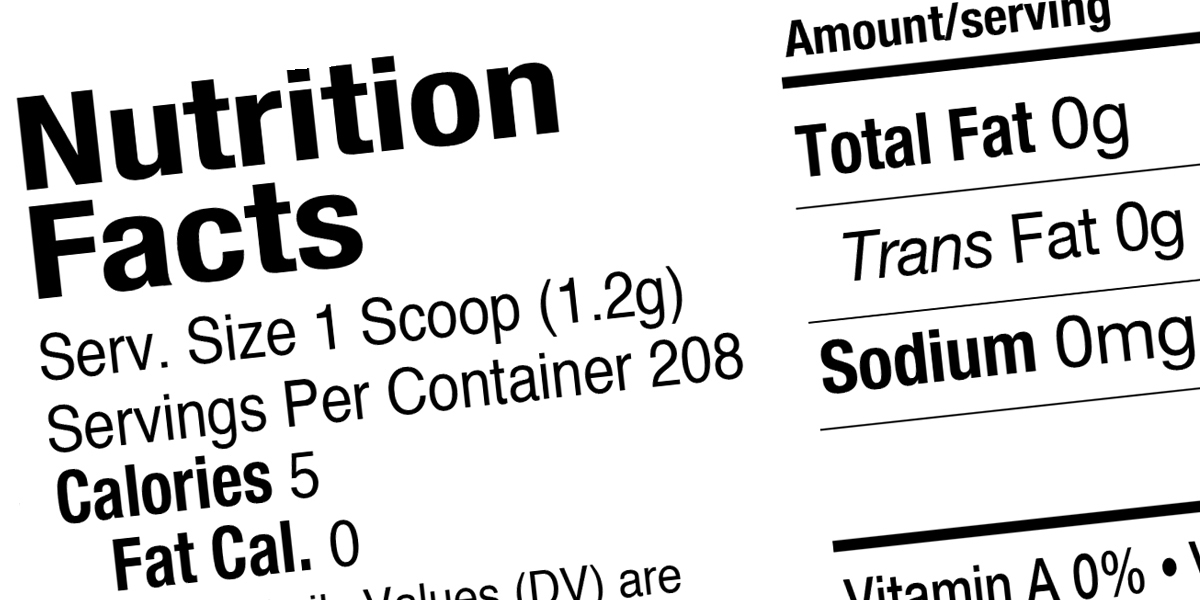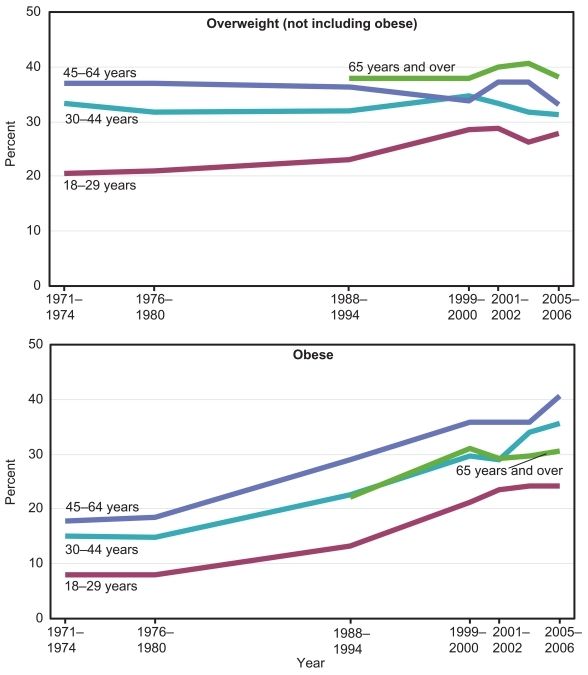

By Melissa Kravitz
In the second edition of the U.S. Department of Agriculture’s (USDA) Dietary Goals for the United States, published in 1977, Americans were advised to limit their intake of fats, replacing their regular fat sources (meat, butter) with complex carbohydrates and manufactured substitutes (margarine).
And just as low-fat, fat-free and “lite” products began cluttering grocery shelves with their fat-less promises and shiny packaging tempting grocery shoppers to pick the skinnier, chicer lifestyle purchase, obesity rates began to grow and eventually soar in the U.S.
Avoiding fats has made America even fatter than before.

“The 40-year-old campaign to create low- and nonfat versions of traditional foods has been a failure: We’ve gotten fat on low-fat products. Why? Because removing the fat from the foods doesn’t necessarily make them nonfattening. Carbohydrates can also make you fat and many low- and nonfat foods boost the sugars to make up for the loss of flavor,” Michael Pollan explains in Food Rules. “By demonizing one nutrient—fat—we inevitably give a free pass to another, supposedly ‘good,’ nutrient—carbohydrates in this case—and then proceed to eat too much of them instead.”
Since the low-fat campaign began in the late 1970s, Americans have actually been eating more than 500 additional calories per day, most of them in the form of refined carbohydrates like sugar. The result: The average man is 17 pounds heavier and the average woman 19 pounds heavier than in the late 1970s. The takeaway here is that you’re better off eating the real thing in moderation than bingeing on lite products packed with sugars and salt.
A 2015 study conducted by American and British doctors concludes that the dietary fat recommendations introduced to 220 million Americans and 56 million UK citizens in the late 1970s and early ’80s were completely unsubstantiated by clinical trials. As a result, “clinicians may be more questioning of dietary guidelines, less accepting of low-fat advice (concomitantly high carbohydrate) and more engaged in nutritional discussions about the role of food in health.”
The Spread of the Low-Fat Myth
Intuitively or at least to those not versed in nutrition and medical science, eating less fat to be less fat may add up. And when politicians and the media perpetuate this myth, one can see how easy it is to buy into. When low-fat snacks are sitting next to traditional packaged cookies on the shelf, just feet away from the aisle-cap magazine boasting the newest tricks to eat less fat, what are Americans going to buy?
In the February 2008 article How the Ideology of Low Fat Conquered America, published in Oxford’s Journal of the History of Medicine and Allied Sciences, scientist Ann F. La Berge points to popular 20th-century magazines like Prevention, Family Circle and the now-defunct Ladies’ Home Journal, as well as the New York Times, for popularizing the half-baked science that low-fat foods were the solution to America’s weighty woes. Combine the ever-steady stream of articles on how to eat less fat with clever marketing and tasty products like Snackwell’s line of low-fat baked goods and it’s easy to see how America ate into the myth.
According to Dr. Mark Hyman, author of Eat Fat, Get Thin, we have reduced fat in our diet from 43 percent to 33 percent of calories, yet “we are sicker than ever,” he wrote. Higher rates of heart disease, obesity and type 2 diabetes, which has increased 700 percent since the 1980s, plague Americans and yes, our diet is to blame.
https://twitter.com/EcoWatch/status/683482983341375488
Even the Harvard School of Public Health, which says that the “evidence just isn’t there” when it comes to low-fat diets being the key to good health and weight loss, is ready to end the low-fat myth.
“Carefully conducted clinical trials have found that following a low-fat diet does not make it any easier to lose weight than following a moderate- or high-fat diet,” an Harvard School of Public Health article states. In addition to the low-fat diet trend spiking a 30-year high in obesity rates, researchers have found that low-fat diets offer no benefits when to comes to disease prevention. Rumors that low-fat diets can help prevent illnesses like breast cancer have been scientifically dispelled.
Should We Avoid Food Products With the Words “Lite,” ‘Low-Fat” or “Nonfat” in Their Names?
“Generally any foods with a dietary claim on them are generally misleading and should be avoided,” said culinary nutritionist Tricia Williams, of Food Matters NYC. “Stick to foods that are as close to they are found in nature and not packaged or processed.” Foods marketed as low-fat are traditionally foods found in nature that are then, “stripped of their healthy fats,” Williams said. Skim milk, for example, is a natural ingredient that has its fats removed to sound more appealing to the weight-conscious customer.
“Low-fat foods are not healthy for you. Most people that stick to a low-fat diet gain weight because they end up going heavier on carbs,” Williams warned, noting the correlation between the low-fat diet craze and the obesity epidemic. Don’t forget: When fat was taken out of foods it was replaced by sugar and carbs to add flavor.
Look at it this way. A single Oreo cookie has 40 calories, 16 of which are from fat, as well as 7 grams of carbs and 3.3 grams of sugar. A single Snackwell’s Devil’s Food cookie (which does weigh .6 oz to Oreo’s .3, but still, it is a single cookie), has 50 calories and though there’s no fat, the cookie has 12 grams of carbs and 7 grams of sugar. To market a cookie that has more than twice as much sugar as two Oreos as a health food, is misleading.
If you are trying to cut back on fat, consider foods that are naturally low in fat, rather than mechanically re-created to be low-fat. The American Cancer Society defines a low-fat food as one in which 30 percent or less of the calories in the food come from fat, i.e., a food like a 65 calorie apple, which has .2 grams of fat in it, is considered naturally low-fat.
The healthiest diet in the world, the Mediterranean diet, however, is not packed with naturally low-fat treats and snacks with their fat removed, but rather rich in whole grains, fruits, vegetables and nuts, some of which contain healthy fats. Long touted as the best diet for longevity and health, the Mediterranean diet has been found to reduce the risk of heart disease, prevent type 2 diabetes and yes, help with weight loss, even though olive oil, meats, seafood and other naturally fatty foods are staples in this diet.
Next time you think that eating fat will make you fat, think again. We have been conditioned to think about health and nutrition with certain terms and labels, but moving beyond what the mass of American eaters has accepted as truth for too long is essential to our health.
Reposted with permission from our media associate AlterNet.

 233k
233k  41k
41k  Subscribe
Subscribe 